How to Make Candles: The Ultimate Guide to Non-Toxic Candle Making
Have you ever wondered how to make candles? If you’ve ever considered candle making at home, you probably know there’s something deeply fulfilling about creating a beautiful, aromatic piece that fills your home with warmth. DIY candles aren’t just a cost-effective way to enjoy delightful scents—they're also an opportunity to reduce toxins, minimize waste, and embrace sustainable, eco-friendly practices. In this guide, I’ll take you step-by-step through the ins and outs of how to make candles, covering everything from picking natural ingredients to mastering simple techniques. By the end, you’ll be ready to make candles that not only look and smell amazing but are also healthier for you and the environment.

Why Make Your Own Candles?
In recent years, the candle making world has shifted from basic beeswax and paraffin to a broader, more eco-conscious range of options. Many of us have moved toward more sustainable lifestyles, questioning the impact of the products we use daily. Traditional candles, while lovely, often come with a cost: paraffin candles release toxins as they burn, and their synthetic fragrances can irritate those sensitive to chemicals.
Learning how to make candles gives you control over every aspect, from the wax type to the wick and scent, which means no unwanted toxins and plenty of room for creativity. Plus, it’s a relaxing activity that produces tangible results. Whether you’re after subtle aromas, bug-repelling candles for your patio, or seasonal scents to set a holiday mood, learning how to make candles will allow you to create an atmosphere tailored to your taste.

Essential Candle Making Materials and Tools
When starting out, it’s tempting to gather all the supplies you see, but keeping it simple can make candle making a more accessible hobby. Let’s talk about some essentials that are easy to find and align with a sustainable, eco-friendly approach while learning how to make candles.
Wax Types: The wax you choose can make all the difference in the look and feel of your candles. Soy wax is affordable, easy to work with, and burns cleaner than paraffin. Beeswax has natural honey tones and doesn’t require much scent, but for vegan candles, coconut wax is a beautiful, creamy alternative. Each of these waxes holds fragrance well, giving you a range of choices based on the experience you want.
Wicks: For non-toxic candles, cotton wicks or wooden wicks are best. Wooden wicks add a lovely crackling sound, while cotton is versatile and burns steadily.
Containers and Molds: Part of the charm of learning how to make candles is finding creative containers—old jars, teacups, or repurposed mason jars work beautifully. Make sure they’re heatproof to handle melted wax. You can also look into silicon molds if you’re interested in free-standing pillar candles.
Scents: Essential oils are your best friends for a natural scent if you've wondered how to make candles smell nice without using fragrance oils. Lavender, eucalyptus, and peppermint create soothing blends, while citrus scents, like lemongrass and orange, energize a room. Experiment with blends to discover which combinations evoke the atmosphere you’re after.
Dyes and Embellishments: If you want to add a pop of color in your DIY candles, consider natural dyes like turmeric, matcha powder, or dried petals. For an eco-friendly touch, avoid synthetic dyes and instead use dried flower petals or spices to add visual appeal.
For a comprehensive guide to sustainable candle supplies, explore CandleScience.
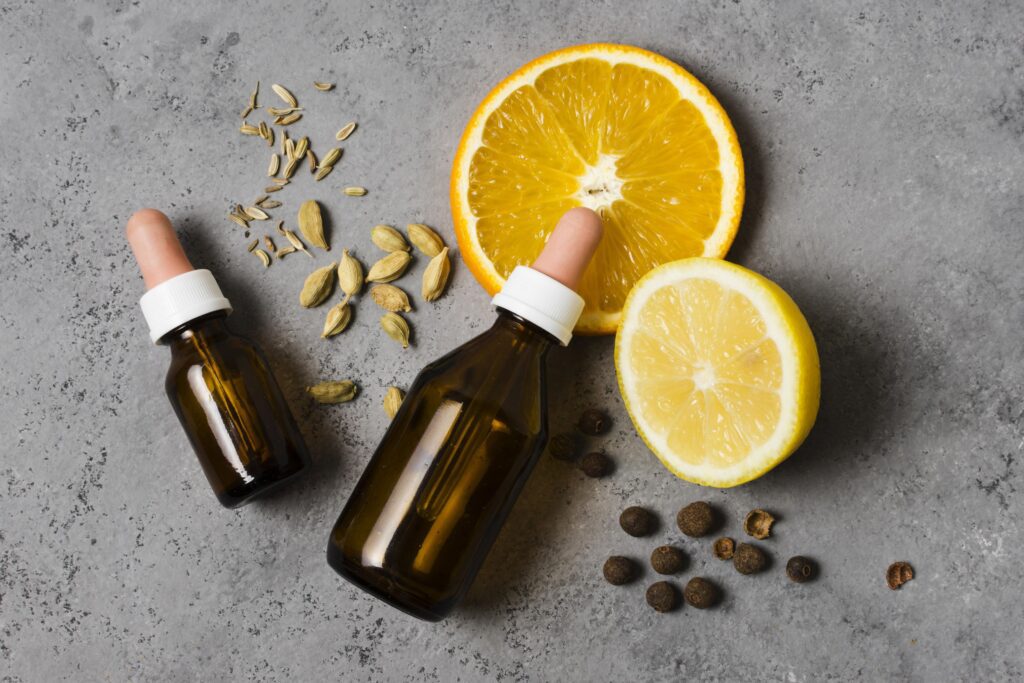
How to Make Soy Candles with Essential Oils
Let’s walk through making soy candles, which is also a beginner-friendly choice when starting to make candles. Soy wax is easy to work with, burns slowly, and combines well with essential oils, creating a healthy, long-lasting candle.
Start by melting your soy wax in a double boiler, stirring gently as it heats. When it reaches about 85°C, take it off the heat and let it cool to around 60°C before adding your essential oils—this prevents the fragrance from evaporating. Adding about 10-15 drops of oils like lavender, rosemary, or lemongrass will give your candle a rich, full-bodied scent.
Once the wax and oils are blended, prepare your wick by securing it in the center of the container. You can use a drop of melted wax to stick the wick in place, or try wick stickers if you prefer. Slowly pour in the melted wax, keeping the wick straight. Let the candle set for at least 24 hours before lighting to ensure the wax is solid and the fragrance has fully infused.
For inspiration on essential oil blends, check out AromaWeb.
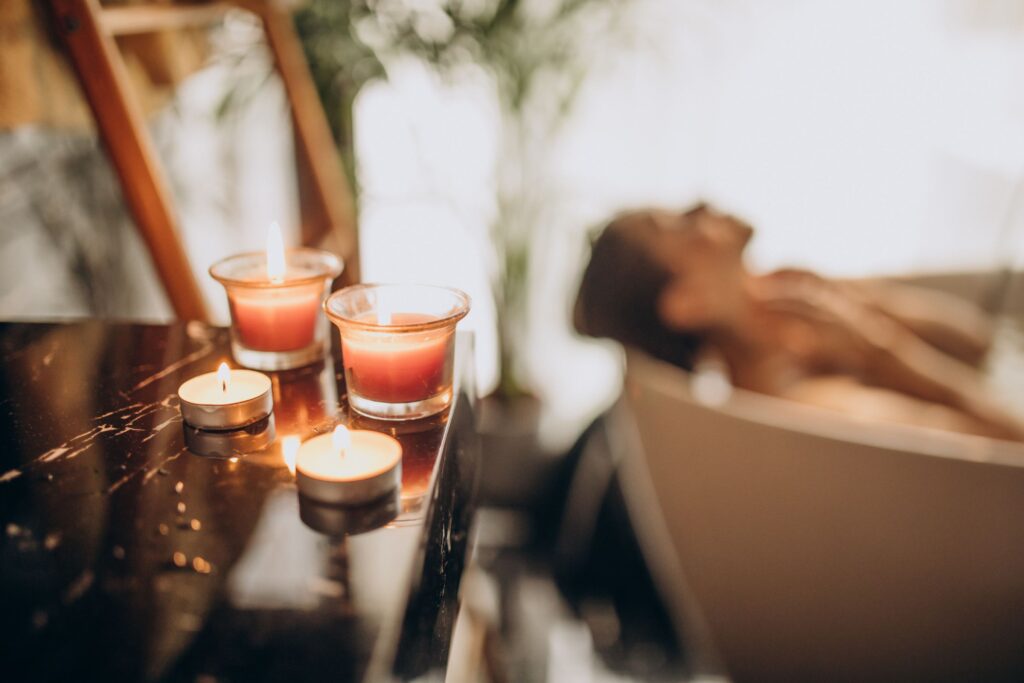
Making Citronella Candles: Natural Outdoor Solutions
One of the most satisfying candles to make is a citronella candle, which naturally repels mosquitoes and insects. Whether you’re planning a backyard BBQ or a cozy evening on the porch, a citronella candle is a must-have.
The process for making citronella candles is similar to soy candles. The difference lies in the choice of essential oils: citronella is a powerful bug repellent, but you can enhance its effects with oils like lemon eucalyptus, tea tree, and peppermint. These oils not only boost citronella’s power but also create a refreshing aroma that’s perfect for outdoor spaces. Pour your wax, set your wick, and allow the candle to cure just like before.
By learning how to make candles for the outdoors, you skip the harsh chemicals found in many store-bought versions or anti-insect sprays. They’re not only better for the environment but also safer for your family and pets.
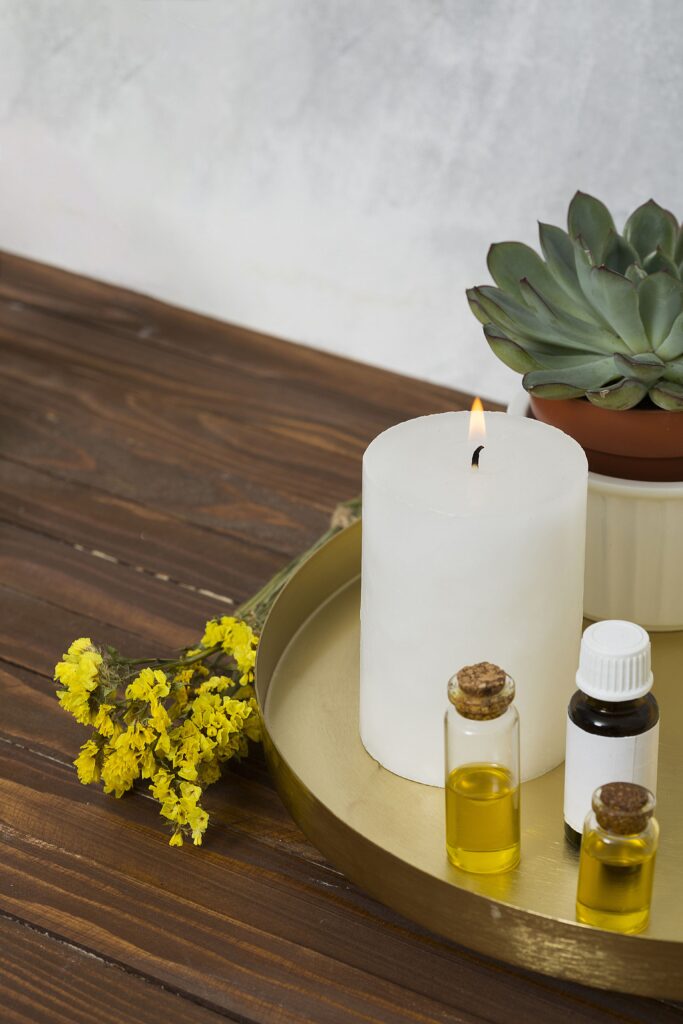
Crafting the Perfect Christmas Candle
During the holiday season, nothing feels cozier than the smell of Christmas candles. It is also the perfect time to learn how to make candles, so you can enjoy a nice crafty holiday and also have wonderful gifts for your friends and family. Making your own festive candles is an easy way to fill your home with seasonal scents, from warm spices to fresh pine.
For Christmas candles, I recommend using essential oils like cinnamon, clove, and pine. These oils blend beautifully and evoke a sense of warmth and holiday spirit. If you’d like to add some color, try using a pinch of cinnamon or cocoa powder for a warm, brown hue. To complete the look, consider adding dried cranberries, pine needles, or a sprig of rosemary to your candle for a rustic, festive touch.
These candles make perfect gifts and allow you to control the strength of the fragrance, ensuring it’s subtle yet effective. If your friends or family are up to it, you can also make a great DIY session for them to learn how to make candles themselves as well.

Pro Tips for Even, Long-Lasting Candle Burns
If you’re learning how to make candles at home, a common concern is achieving an even burn. To maximize the life of your candle, make sure to follow these simple tips:
Trim the Wick: Keep your wick trimmed to about ¼ inch before each burn. This reduces smoking and ensures a steady flame.
Full Melt Pool: On the first burn, allow the candle to melt all the way across the surface. This helps avoid tunneling, where only the center of the candle melts.
Avoid Drafts: Keep your candle away from drafts, as they can cause uneven burning and shorten the candle’s life.
By following these tips, you’ll enjoy a clean, steady burn each time, maximizing the enjoyment of your handmade candle.
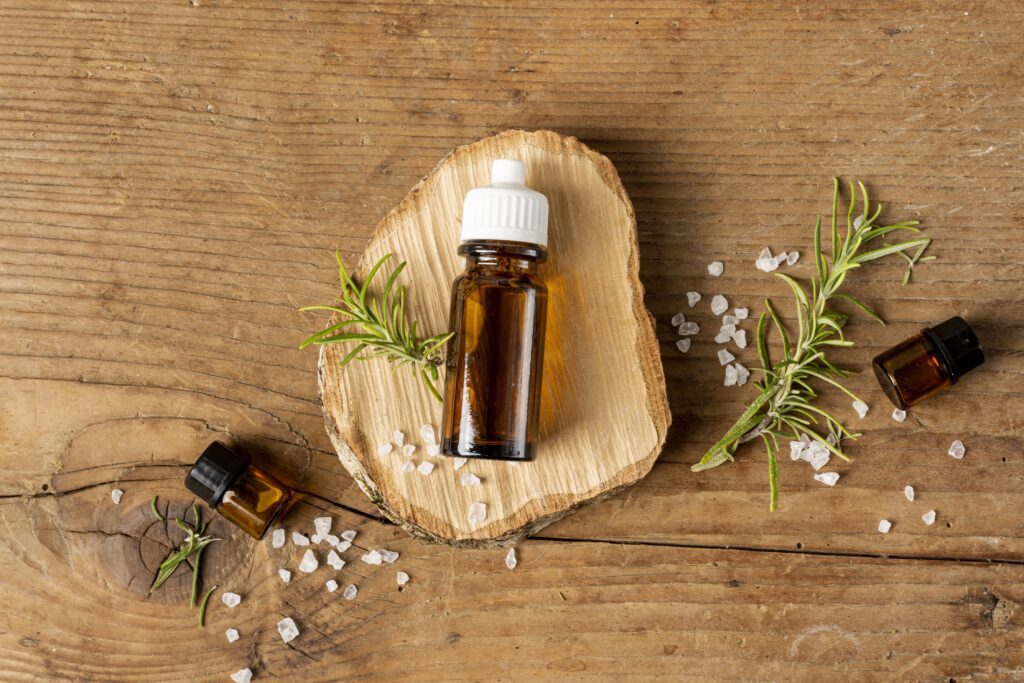
Upcycling Containers: Eco-Friendly Candle Making Ideas
As mentioned earlier, one of the joys of learning how to make candles is experimenting with containers. Reusing old jars, mugs, or even small pots makes each candle unique and gives new life to items that might otherwise be discarded. Before using any container, make sure it’s heatproof and free of cracks.
For example, mason jars make classic, sturdy candle containers, while vintage teacups add a whimsical, decorative touch. You can even use small glass yogurt jars for mini candles, perfect for gifts or as a travel-friendly option. By repurposing these containers, you’re reducing waste and giving each candle a unique personality. Which is also perhaps one of the reasons you wanted to learn how to make candles in the first place, right?
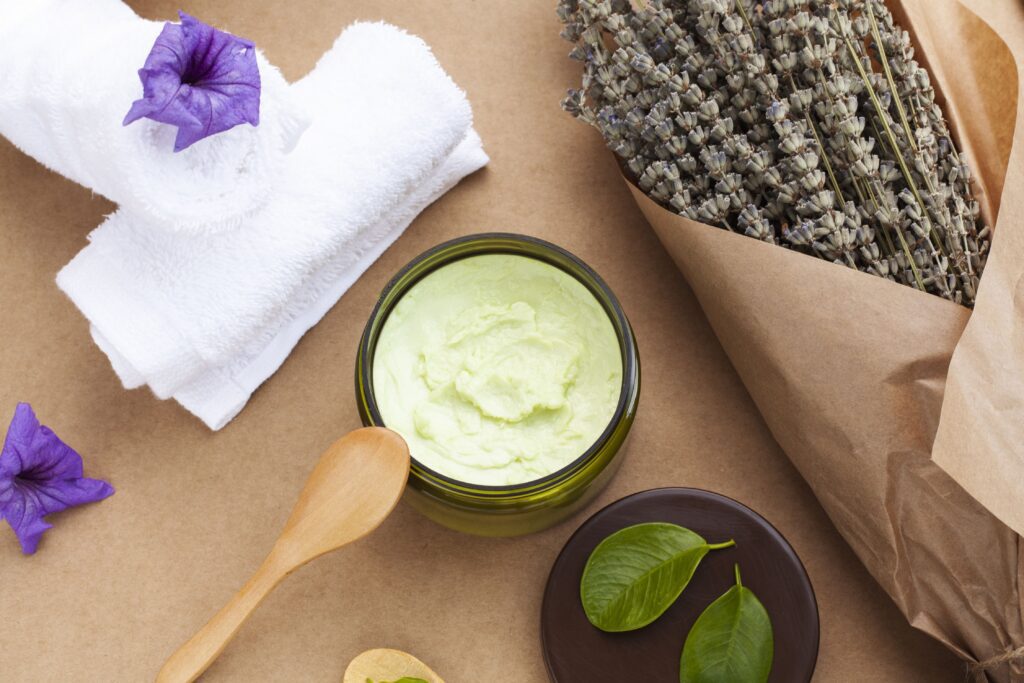
Troubleshooting Candle-Making Issues
If you’ve just started learning how to make candles and noticed some common problems, you’re not alone! Many new candle makers experience issues with things like weak scents, cracks, or sinkholes.
Weak Scent: If your candles aren’t as fragrant as you’d like, add essential oils at the right temperature (around 140°F). Adding them when the wax is too hot can cause the fragrance to evaporate.
Cracks and Sinkholes: If your candle cracks or develops sinkholes, it might be due to rapid cooling. Pouring the wax slowly and avoiding cold drafts while it sets can help. For persistent sinkholes, try a second pour to fill in gaps.
Rough Tops: If your candle top appears uneven, a quick re-melt with a heat gun will help smooth it out.
Every batch is an opportunity to experiment, and refine your technique when learning how to make candles. Embrace the learning curve, and soon enough, you’ll be creating professional-quality candles at home.
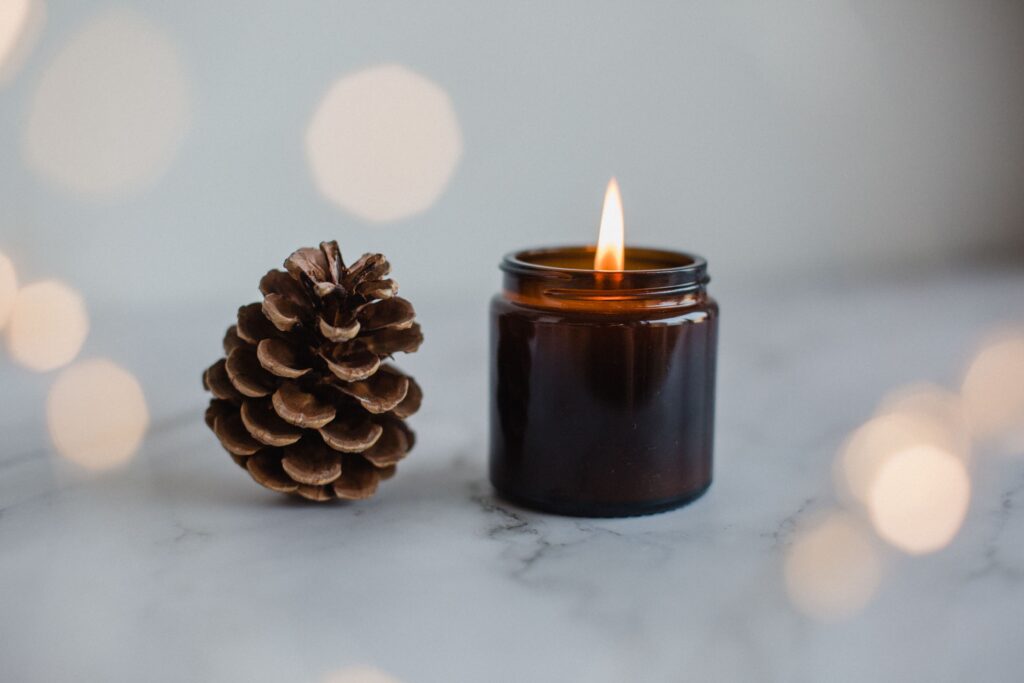
How to Make Candles as Gifts or Decor
Finally, let’s talk about how to make candles as thoughtful, homemade gifts. A candle you’ve crafted by hand is more than just a decorative item—it’s an expression of your care and creativity. There’s something incredibly special about giving a handmade gift, and candles are the perfect way to share a little warmth and light with the people you love. Whether it’s a birthday, a holiday, or just a special gesture, a homemade candle can make a thoughtful and meaningful gift. And that's yet another reason to learn how to make candles!
The beauty of homemade candles lies in their versatility. You can personalize them with the recipient’s favorite scents, colors, or even the container itself. Maybe your best friend loves lavender, so you learn how to make a candle with a calming lavender-scent in a beautiful vintage teacup.
Or, if your mom enjoys the warm, cozy scents of cinnamon and vanilla, you can also discover how to make candles that reflect those nostalgic holiday vibes. You can also get creative with the containers—an old mason jar, a repurposed wine glass, or even a small terracotta pot can make for charming candle holders. The possibilities are endless, and they allow you to create something unique for every person on your gift list.
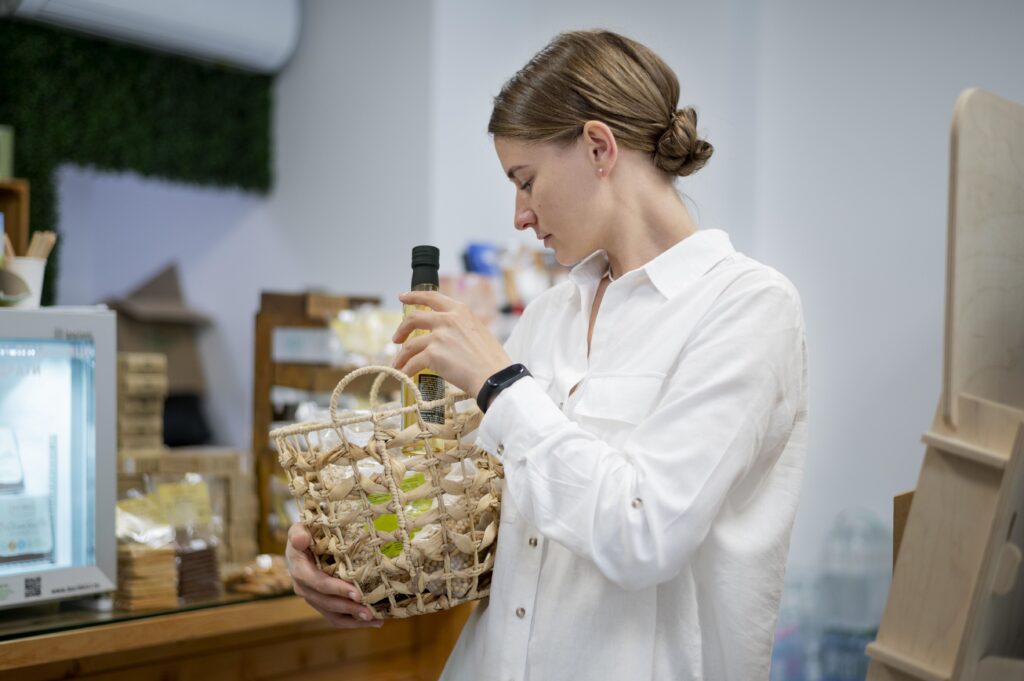
Adding personal touches like dried flowers, citrus peels, or even a sprinkle of gold flakes can make your candles feel extra special. A simple handwritten tag tied with natural twine adds an extra layer of thoughtfulness. If you want to take it a step further, consider learning how to make candles with a message inside, like a motivational quote or a personalized note. The element of surprise when the recipient lights the candle and discovers the hidden message will be a memorable experience.
Another idea for gifting homemade candles is learning how to make candles as gift sets. You can make a few different varieties—such as one with a floral scent, one with a citrus aroma, and another with earthy tones—and package them together in a decorative box or basket. Not only will the recipient enjoy the candles, but they’ll appreciate the effort and creativity you’ve put into creating a unique gift package.
Handmade candles are also great for special occasions like weddings, baby showers, or housewarmings. You can make small candles as favors, adding a personal touch to the event. A wedding candle in the couple’s favorite scent or a housewarming candle in a warm, inviting fragrance will add a heartfelt gesture to any celebration.
In a world where so many gifts are mass-produced, taking the time to create something by hand shows the thought and effort you’ve put into choosing something meaningful. Whether it’s a single candle or a whole collection, a homemade candle gift will always stand out and make a lasting impression. With each flicker of the flame, your creativity and care will continue to light up someone’s life, long after the candle has burned down.
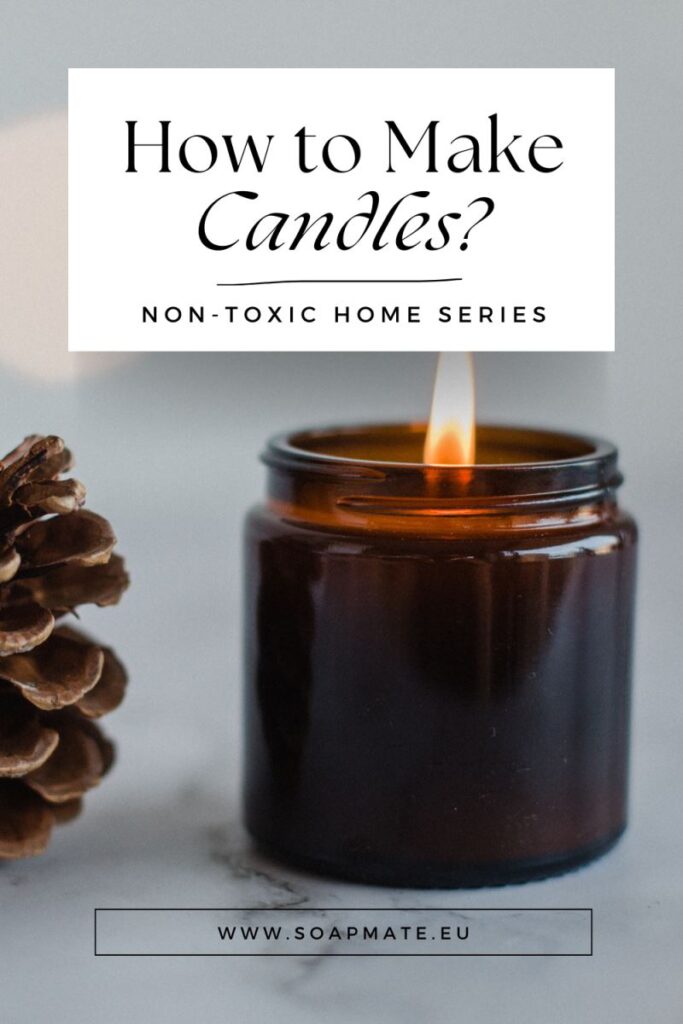
This article was all about how to make candles at home. If you are new to this craft and want to learn how to make a candle from scratch, you'll probably find this article useful. Pin it for later so you always have it at hand.
